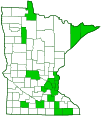somewhat silky mound ant
(Formica subsericea)
Conservation • Description • Habitat • Ecology • Distribution • Taxonomy
Conservation Status |
|
|||||||
| IUCN Red List | not listed |
|||||||
| NatureServe | NNR - Unranked |
|||||||
| Minnesota | not listed |
|||||||
Description |
||
Somewhat silky mound ant, also called silky field or black field ant, is very common in the United States east of the Great Plains, with only spotty records in the west. According to an entomologist at Missouri Botanical Garden, it is “By a considerable margin the most abundant and widely distributed black Formica east of the Rocky Mountains.” It is relatively uncommon in most of Minnesota, though it is reported as common at Cedar Creek Ecosystem Science Reserve in Anoka County. It is found in open deciduous forests, old fields, roadsides, lawns, and gardens. Workers are ⅛″ to 5 ⁄16″ (4 to 8 mm) long, black, and somewhat shiny. Winged males and queens are about the same size, 3 ⁄16″ to ½″ (5 to 13 mm) long. The first body segment behind the head (mesosoma) has two distinct elevated areas (bumps). It is covered with three exoskeletal plates, the pronotum and mesonotum covering the thorax, and the propodeum covering the first segment of the abdomen that is fused to the thorax. The pronotum and mesonotum form one smooth convex bump, the propodeum a second convex bump. The second abdominal segment (petiole) is narrow and waist-like, and has a single raised bump (node). The remainder of the abdomen (gaster) is bulbous. The head, mesosoma, legs, and first three segments of the gaster are covered with silvery appressed hairs. The fourth segment of the gaster is bare or almost bare. There are single rows of erect golden hairs at the end of each segment. On the first segment there are also usually 10 to 25, sometimes just 1 to 3, erect hairs not including the row at the end. Those are each shorter than or equal to the distance between them. The head is broadly rounded in outline. The rear margin is rounded, not distinctly concave. The eyes are large. The facial plate above the mouth (clypeus) is not notched. The finger-like sensory mouth part (maxillary palp) is long and has six segments. The basal segment of each antennae (scape) is very long, longer than the length of the head. |
||
Size |
||
Worker: ⅛″ to 5 ⁄16″ (4 to 8 mm) Male: 3 ⁄16″ to ½″ (5 to 13 mm) Queen: 3 ⁄16″ to ½″ (5 to 13 mm) |
||
Similar Species |
||
Habitat |
||
Open deciduous forests, old fields, roadsides, lawns, and gardens |
||
Ecology |
||
Season |
||
Present from spring thaw to first frost of fall. Nuptial flight in July or August. |
||
Behavior |
||
Somewhat silky mound ants are often found as slaves in colonies of Amazon ants (Polyergus spp.). |
||
Life Cycle |
||
Nests are variable in size. |
||
Larva Food |
||
|
||
Adult Food |
||
Aphid honeydew, soft-bodied insects, and seed husks. |
||
Distribution |
||||
|
Sources |
|||
| 11/12/2022 | ||||
Occurrence |
||||
Very common in eastern United States; relatively uncommon in Minnesota |
||||
Taxonomy |
|||
Order |
Hymenoptera (Ants, Bees, Wasps, and Sawflies) | ||
Suborder |
Apocrita (Narrow-waisted Wasps, Ants, and Bees) | ||
Infraorder |
Aculeata (ants, bees, and stinging wasps) | ||
Superfamily |
Formicoidea (ants) | ||
Family |
Formicidae (ants) | ||
Subfamily |
Formicinae | ||
Tribe |
Formicini | ||
Genus |
Formica (wood, mound, and field ants) | ||
| no rank | fusca-group field ants (Formica fusca group) | ||
Synonyms |
|||
|
|||
Common Names |
|||
black field ant silky field ant slightly silky mound ant somewhat silky mound ant |
|||
Glossary
Gaster
The bulbous part of the abdomen of ants, bees, and wasps. In ants it usually begins at segment three.
Palp
Short for pedipalp. A segmented, finger-like process of an arthropod; one is attached to each maxilla and two are attached to the labium. They function as sense organs in spiders and insects, and as weapons in scorpions. Plural: palpi or palps.
Scape
In plants: An erect, leafless stalk growing from the rootstock and supporting a flower or a flower cluster. In insects: The basal segment of the antenna.
Visitor Photos |
|||||
Share your photo of this insect. |
|||||
| This button not working for you? Simply email us at info@MinnesotaSeasons.com. Attach one or more photos and, if you like, a caption. |
|||||
Alfredo Colon |
|||||
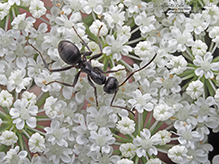 |
|||||
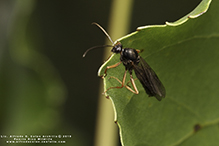 |
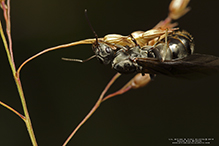 |
||||
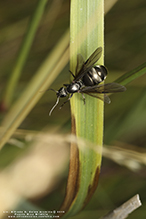 |
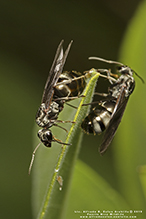 |
||||
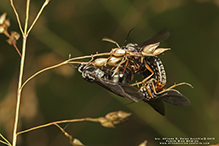 |
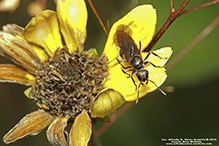 |
||||
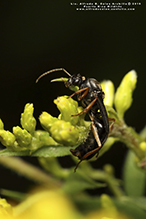 |
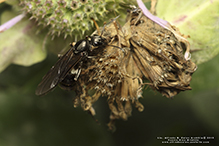 |
||||
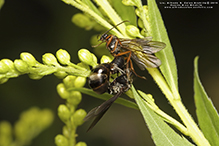 |
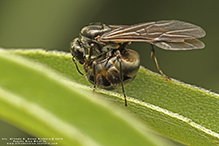 |
||||
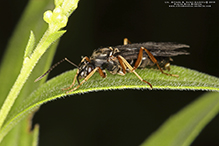 |
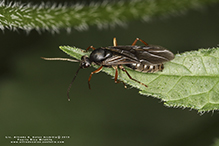 |
||||
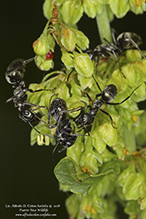 |
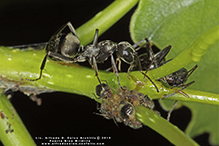 |
||||
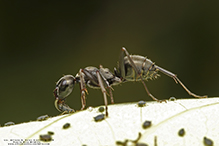 |
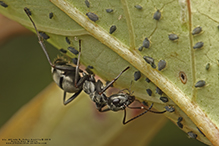 |
||||
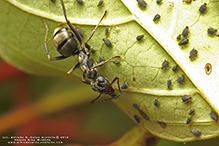 |
|||||
MinnesotaSeasons.com Photos |
|||||
|
|||||

Slideshows |
||

Visitor Videos |
|||
Share your video of this insect. |
|||
| This button not working for you? Simply email us at info@MinnesotaSeasons.com. Attach a video, a YouTube link, or a cloud storage link. |
|||
Other Videos |
|||
| FIELD ANT tending leafhopper nymphs Formica subsericea Rob Curtis |
|||
About
Feb 13, 2016 Formica subsericea FIELD ANT tending leafhopper nymph flock. MCClaughery springs FP, IL 8/2/2014. |
|||


Created: 1/11/2019
Last Updated:
